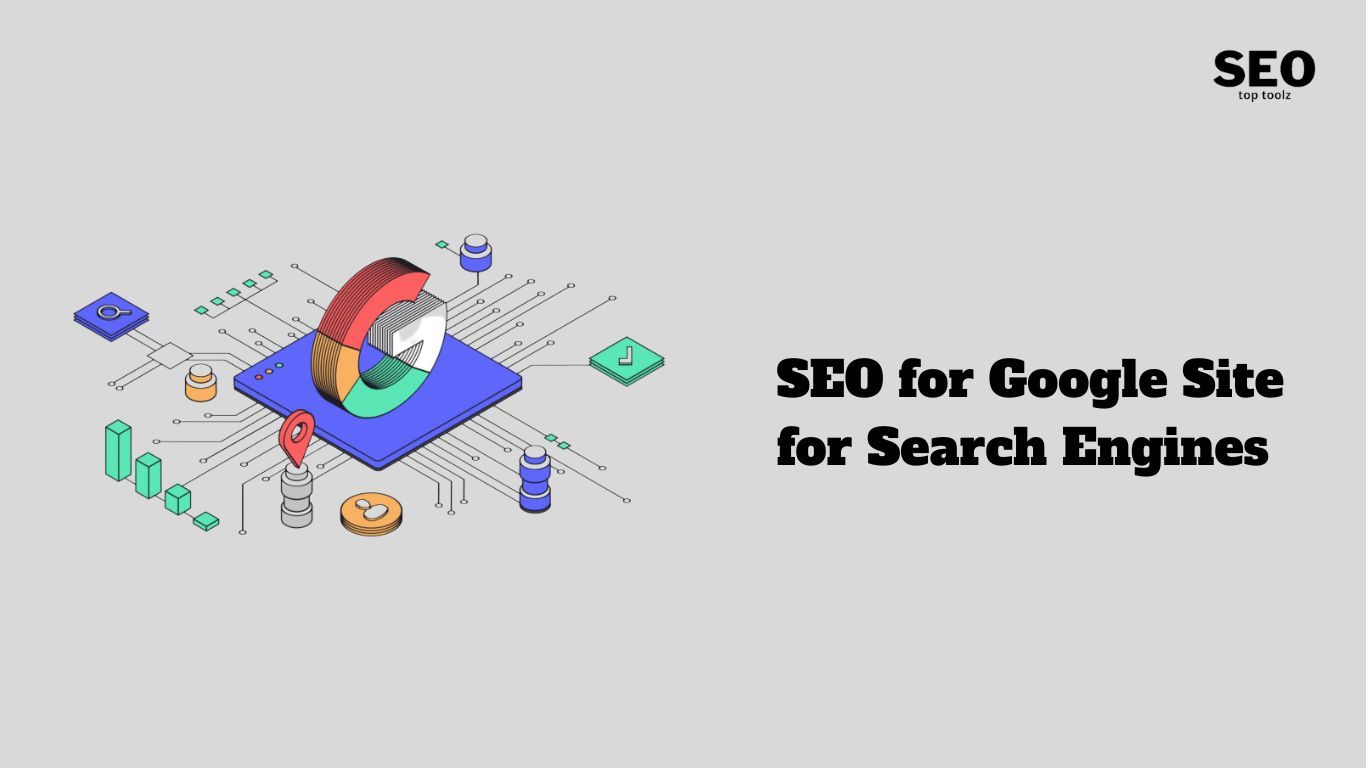How to Optimize SEO for Google Site for Search Engines

Welcome to the world of Google Sites and search engine optimization (SEO)! In today’s digital age, having a strong online presence is crucial for businesses, organizations, or individuals looking to make their mark on the internet. And when it comes to optimizing your website for search engines like Google, understanding the ins and outs of SEO is essential.
In this blog post, we will dive deep into the realm of SEO for Google Sites. Whether you’re starting from scratch or have an existing site that needs some revamping, we’ve got you covered. From keyword research to on-page optimization techniques and off-page strategies – we’ll walk you through step by step on how to optimize your Google Site for better visibility in search engine rankings.
So if you’re ready to take your website from zero to hero in the eyes of search engines, let’s get started!
Understanding the Basics of SEO for Google Sites
Do you have a Google Site that’s not getting the attention it deserves? Understanding the basics of SEO for your Google Site can make all the difference in attracting organic traffic and boosting your site’s visibility on search engines. So, let’s dive into what you need to know!
First and foremost, SEO stands for Search Engine Optimization. It encompasses various techniques and strategies aimed at improving your website’s ranking on search engine results pages (SERPs). When it comes to optimizing your Google Site, there are a few key elements to consider.
One important aspect is keyword research. By identifying relevant keywords related to your site’s content, you can better understand what users are searching for and tailor your content accordingly. Comprehensive keyword research involves looking at search volume, competition, and relevance to ensure that you’re targeting the right terms for maximum impact. Additionally, understanding how search engines crawl and index websites is crucial in optimizing your Google Site effectively.
Remember: The world of SEO is constantly evolving! Stay tuned as we explore more techniques to optimize your Google Site throughout this blog post!
Conducting Keyword Research for Your Google Site
When it comes to optimizing your Google Site for search engines, conducting keyword research is a crucial step. By identifying the right keywords that are relevant to your site’s content and target audience, you can improve its visibility in search engine results pages (SERPs).
Start by brainstorming potential keywords or phrases that people might use when searching for information related to your site. Put yourself in their shoes and think about what words they would likely type into Google. You can also use keyword research tools like Google Keyword Planner or SEMrush to get insights on popular and relevant keywords.
Next, analyze the competition for those keywords. Look at the websites ranking highly for them and evaluate if you have a chance of competing with them. If the competition seems too fierce, consider finding alternative long-tail keywords or niche topics where you have a better chance of ranking higher.
Optimizing Site Structure and Navigation
Optimizing the structure and navigation of your Google Site is crucial for enhancing the user experience and improving search engine rankings. By organizing your site in a logical manner, you make it easier for visitors to navigate through your content, find what they’re looking for, and ultimately stay on your site longer.
One way to optimize site structure is by creating clear and intuitive menus. Make sure that each page on your site can be accessed from the main menu or submenus so that users can easily navigate between different sections. In addition, consider adding breadcrumbs at the top of each page to provide users with a visual trail back to the homepage or previous pages they’ve visited.
Another aspect of optimizing site structure is making use of internal linking. By linking related pages within your own website, you not only help users discover more relevant content but also signal to search engines which pages are important. This can improve indexing and ranking for those specific pages.
Taking the time to optimize your site’s structure and navigation will pay off in terms of improved user experience and better search engine visibility. So don’t overlook this important step when working on SEO for your Google Site!
Creating High-Quality and Relevant Content
Creating high-quality and relevant content is essential for optimizing your Google Site for search engines. When it comes to content, quality trumps quantity every time. Your site’s visitors are looking for valuable information that answers their questions or solves their problems. By providing well-researched and insightful content, you not only attract more traffic but also establish yourself as an authority in your niche.
To create high-quality content, start by understanding your target audience and their needs. Conduct thorough research on the topics they’re interested in and incorporate relevant keywords naturally into your writing. Remember to focus on delivering value rather than keyword stuffing.
In addition to quality, relevance is another crucial aspect of creating effective content. Ensure that each piece of content aligns with the overall theme or purpose of your site. This will help search engines understand what your site is about and improve its visibility in relevant search results.
By consistently producing high-quality and relevant content, you can engage visitors, enhance user experience, build trust with search engines, and increase organic traffic to your Google Site.
Utilizing On-Page SEO Techniques
When it comes to optimizing your Google Site for search engines, on-page SEO techniques play a crucial role in improving your site’s visibility and ranking. These techniques focus on optimizing individual web pages to make them more search engine friendly.
One important aspect of on-page optimization is the use of relevant keywords throughout your site’s content. By conducting thorough keyword research, you can identify the most relevant and high-volume keywords that are related to your niche or industry. Incorporate these keywords strategically into your page titles, headings, meta descriptions, and body content to signal to search engines what your page is about.
In addition to keyword placement, other on-page SEO tactics include optimizing URL structures, using descriptive alt text for images, improving page load speed, and ensuring mobile responsiveness. These factors collectively contribute towards enhancing user experience and making it easier for search engines like Google to crawl and index your site effectively.
Implementing Off-Page SEO Strategies
When it comes to optimizing your Google Site for search engines, off-page SEO strategies play a crucial role in boosting your site’s visibility and authority. Off-page SEO refers to the actions taken outside of your website to improve its online reputation and credibility. These strategies focus on building quality backlinks, increasing social signals, and enhancing brand recognition.
One effective off-page strategy is link building. By acquiring high-quality backlinks from reputable websites, you can signal to search engines that your site is trustworthy and relevant. This can be done through guest blogging, participating in industry forums or communities, or reaching out to influencers for collaborations.
Social media also plays a significant role in off-page optimization. Engaging with your audience on platforms like Facebook, Twitter, and Instagram not only helps build brand awareness but also encourages others to share and interact with your content. Additionally, sharing valuable content on social media can attract more visitors to your site.
Monitoring and Analyzing Site Performance
Monitoring and analyzing the performance of your Google Site is crucial for ensuring its success in search engine rankings. By regularly monitoring your site’s performance, you can identify any issues or areas for improvement and make necessary adjustments to optimize its visibility.
One way to monitor site performance is by utilizing tools like Google Analytics. This powerful tool provides valuable insights into various aspects of your website, including traffic sources, user behavior, bounce rates, and more. By analyzing this data, you can gain a better understanding of how users are interacting with your site and make informed decisions on optimizing its content and structure.
In addition to analytics tools, it’s also important to regularly check key metrics such as page load speed and mobile responsiveness. Slow-loading pages can negatively impact user experience and result in higher bounce rates. Similarly, with the increasing use of mobile devices for browsing the internet, ensuring that your site is optimized for mobile users is essential. Regularly testing these aspects will help you identify any issues early on and take appropriate actions to improve overall site performance.
Conclusion
In today’s digital age, having a strong online presence is crucial for any business or individual. And when it comes to optimizing your Google Site for search engines, implementing effective SEO strategies can make all the difference in driving organic traffic and increasing visibility.
By understanding the basics of SEO for Google Sites and conducting thorough keyword research, you can ensure that your site aligns with what users are searching for. Optimizing your site structure and navigation will not only enhance user experience but also make it easier for search engine crawlers to index your content.

![Top 13 SEO Best Practices for SEO for Google Sites [ Starter Guide ] 2 SEOTopToolz: Digital Marketing and Trending News SEO for Google Sites](https://seotoptoolz.com/wp-content/uploads/2023/07/SEO-for-Google-Sites-13-Tips-for-Optimizing-Google-Sites.png)


